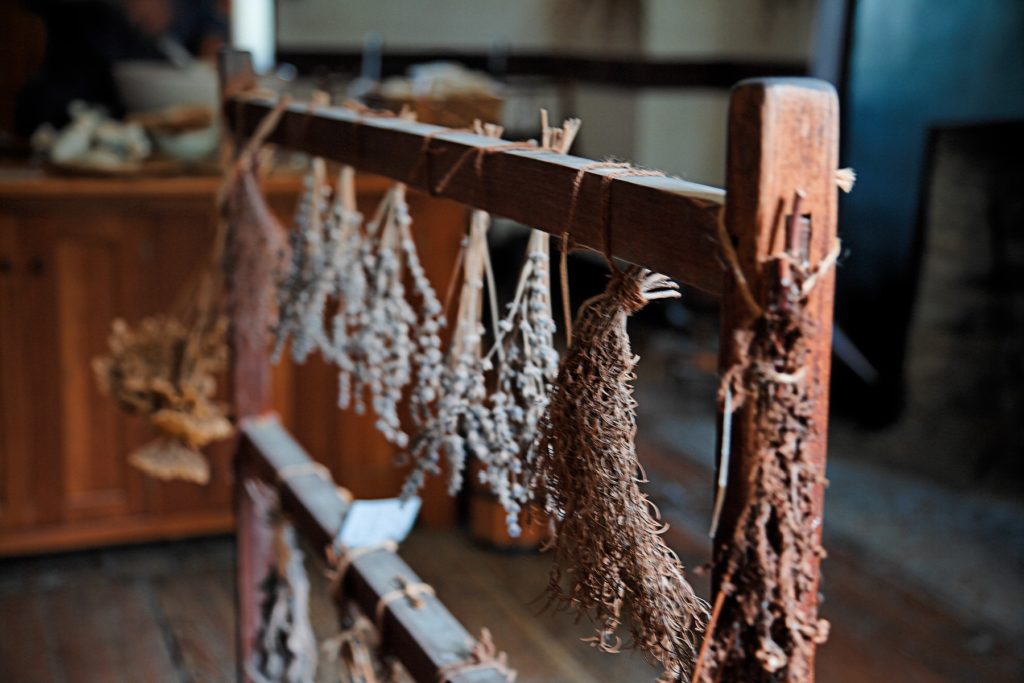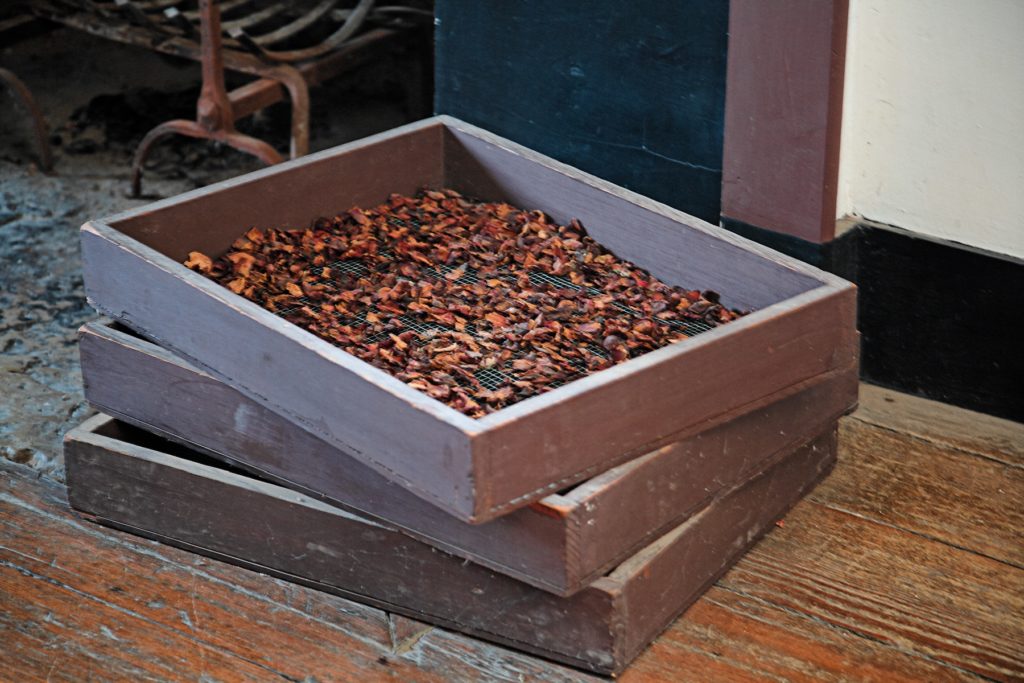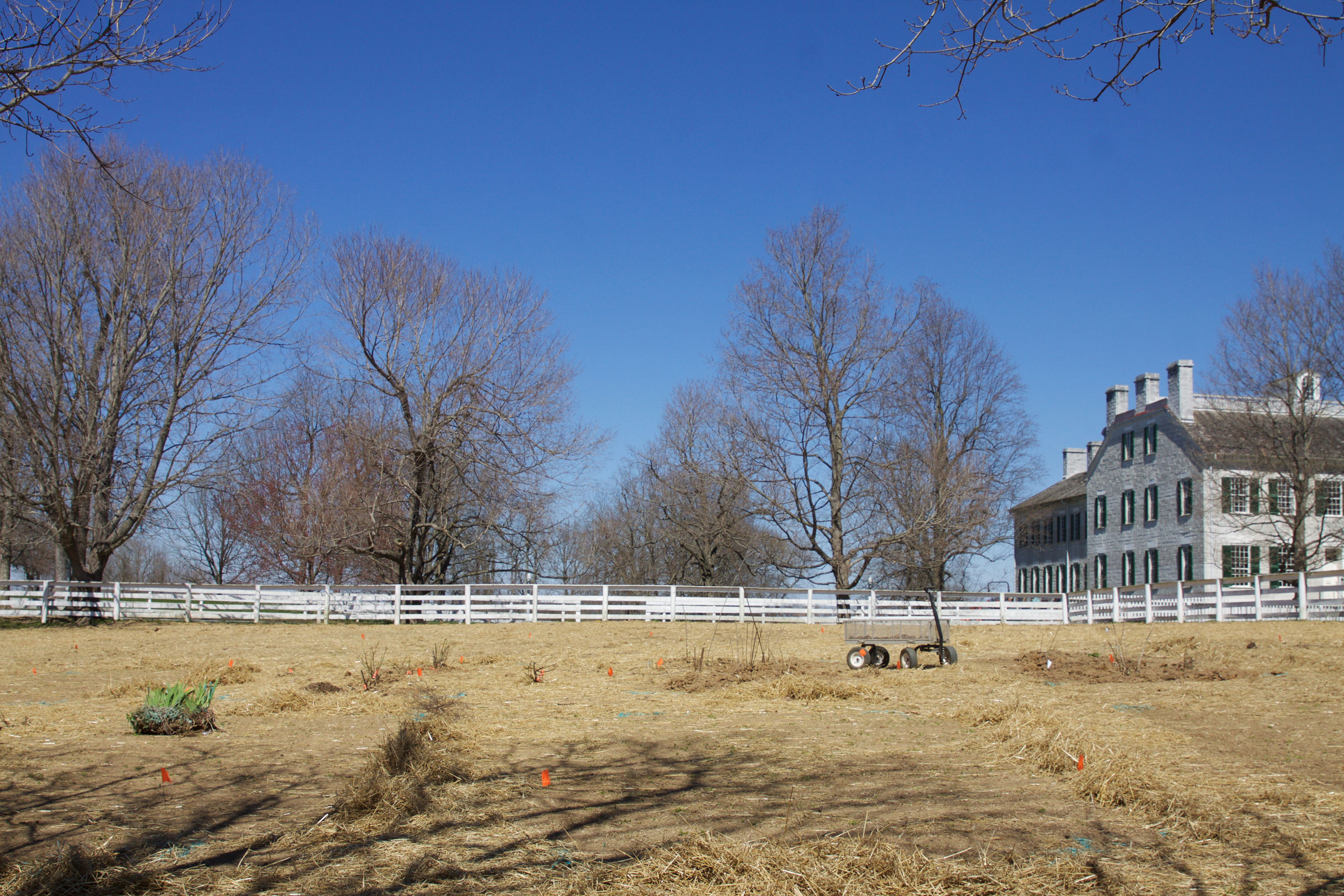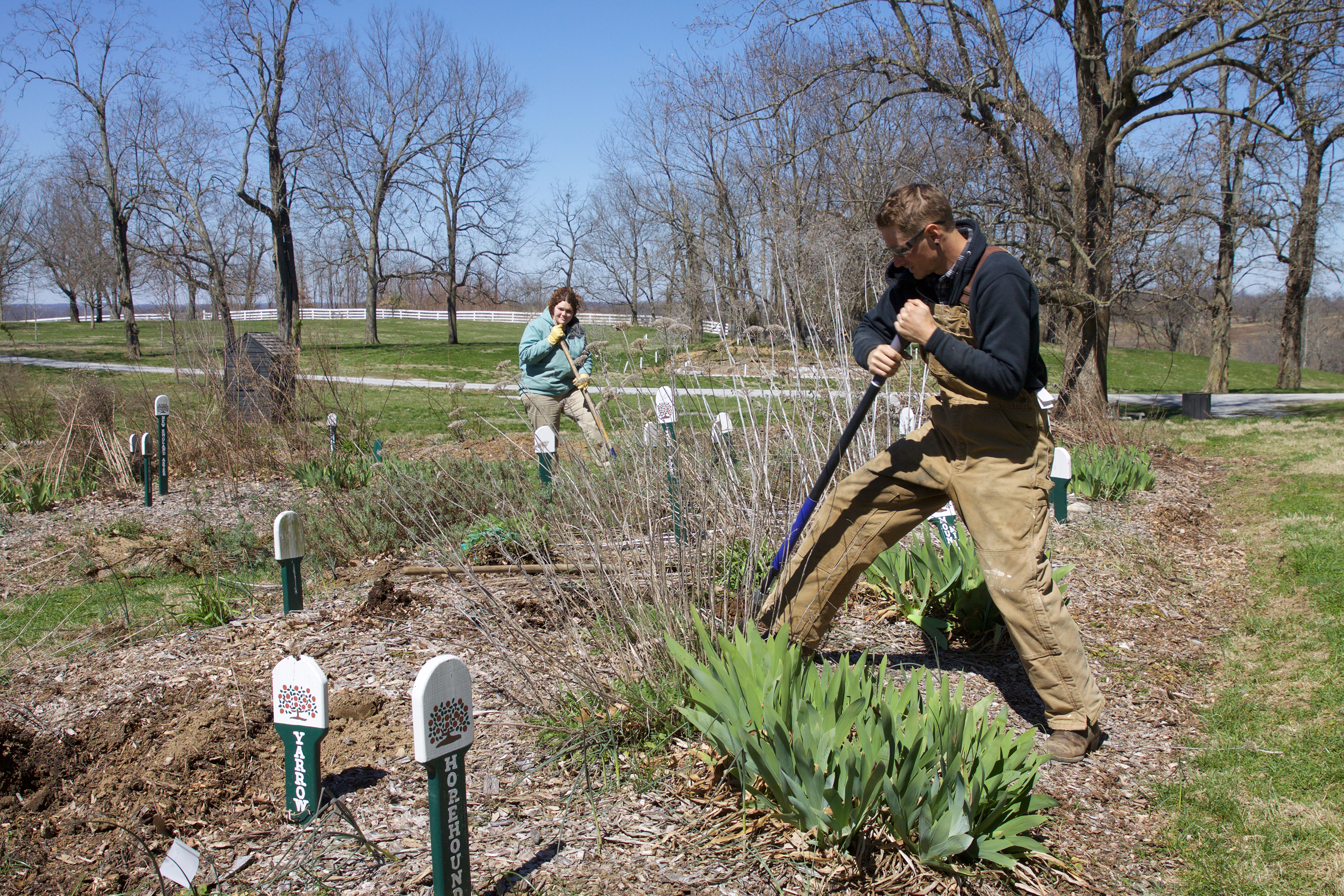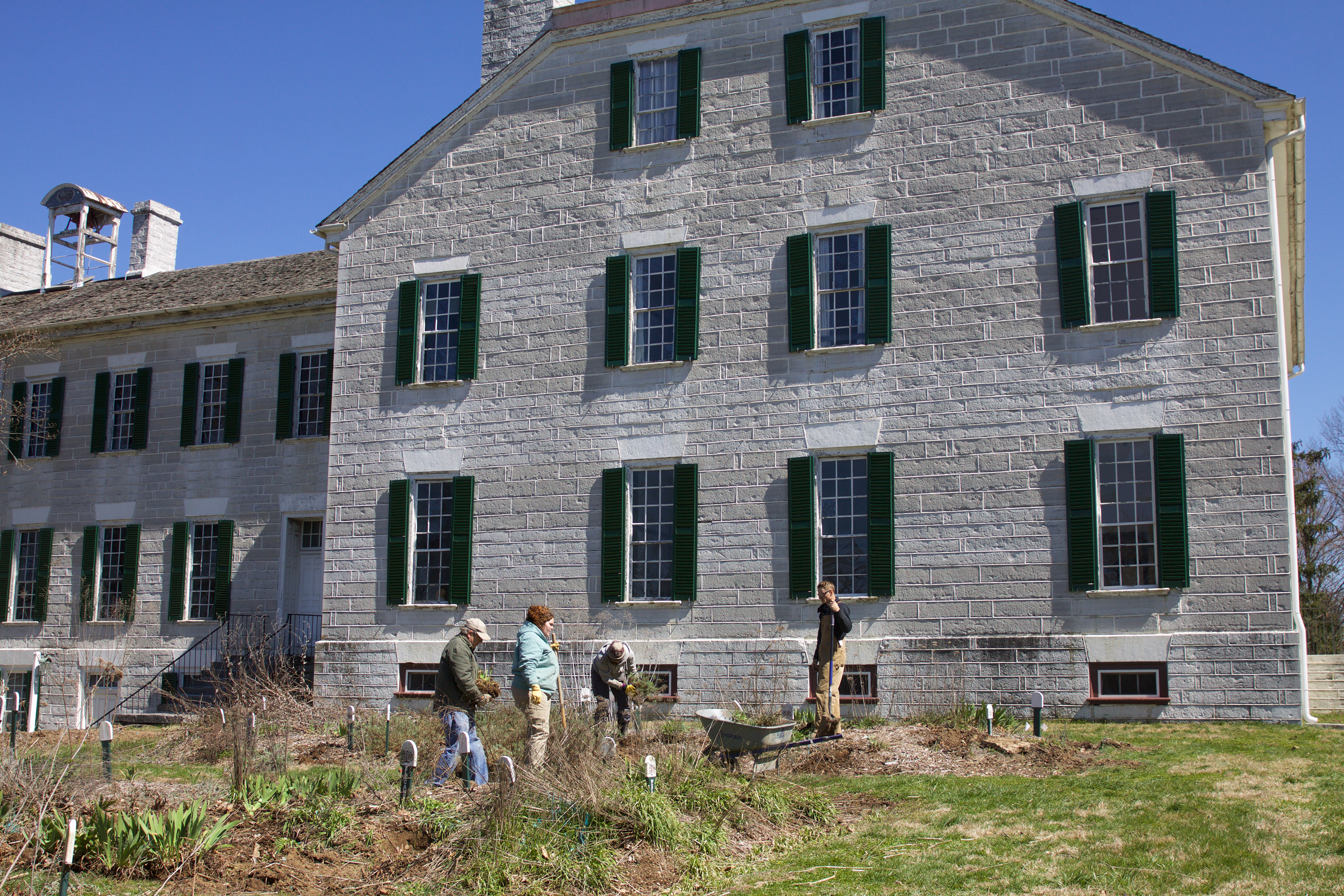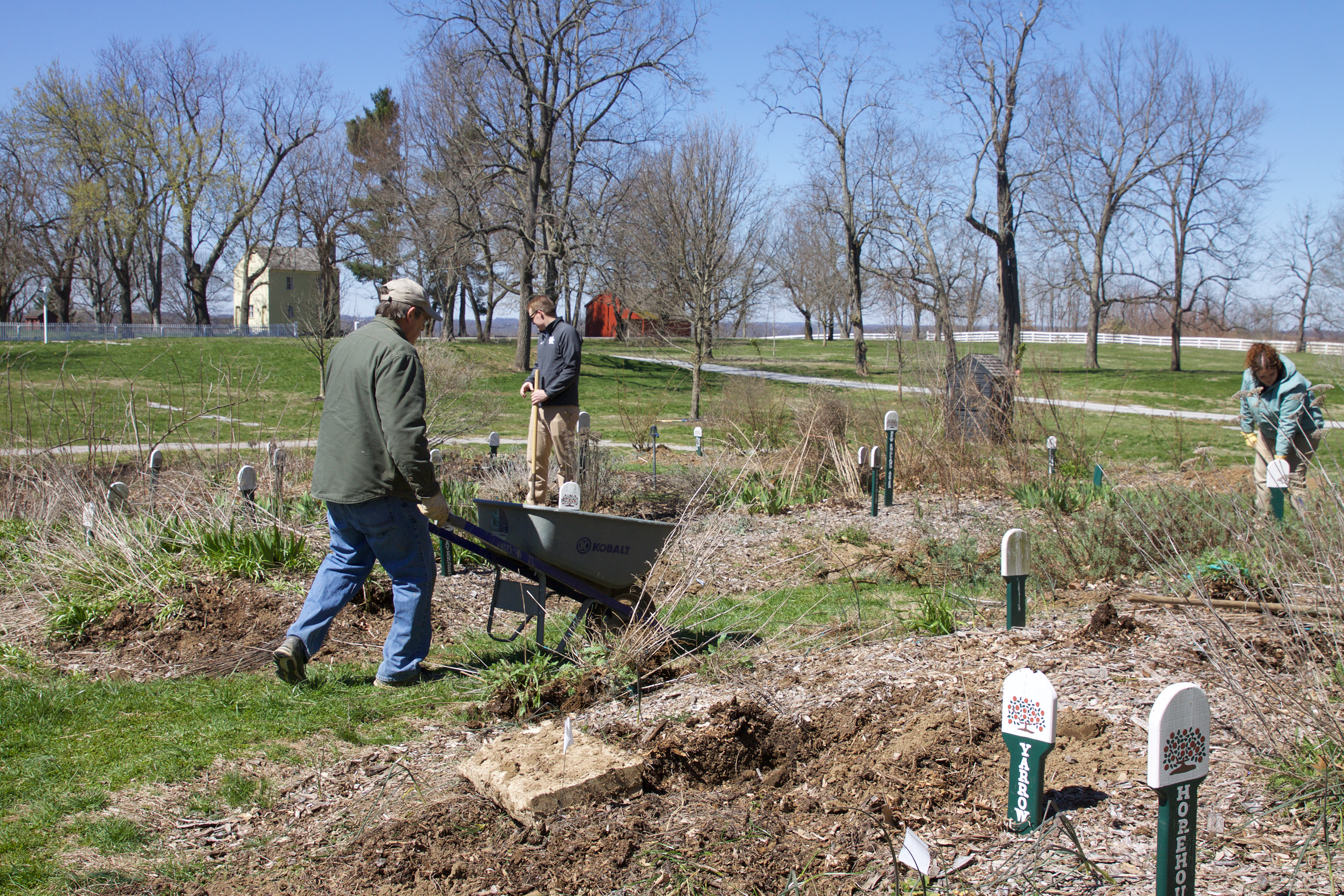Rebekah Roberts, Program Specialist
“A large business is done… in pressed and prepared herbs and roots, besides many tons in bulk…and many tons of extracts, both solids and fluids. The War makes great demand for all the articles. They sell in large quantities. We cannot prepare enough to meet the demand.” – Harvey L. Eads, South Union Shaker Village
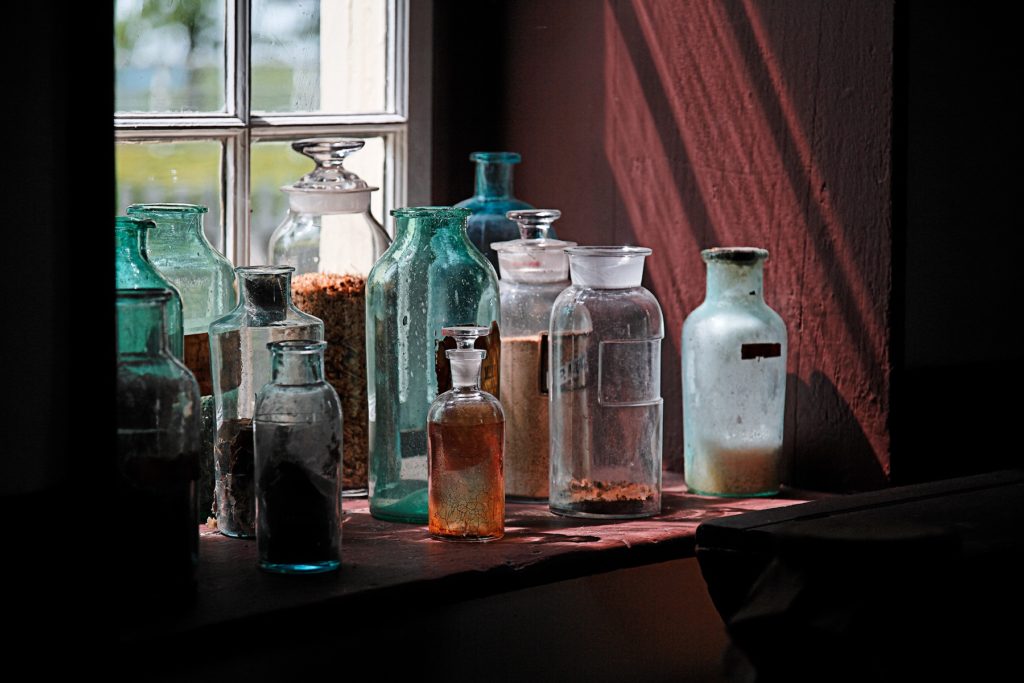
Although perhaps not widely known, the Shakers were among the first group of Americans to begin selling herbs for medicinal purposes in the early decades of the nineteenth century. Shaker communities from the east coast to Kentucky produced a wide variety of medicinal products that went out in the world including medicines, salves, extracts and pressed herbs born from their “physic” gardens. Most Shakers followed the Thomsonian perspective regarding herbal medicines: they believed herbs could cure all ailments. Luckily for their economic fortunes, many Americans at the time believed the same!
At Pleasant Hill, the community produced several hundreds of pounds of herbs each year, and began to expand their garden plots to accommodate their growing industry in the 1840s. “Today we ploughed up a piece of meadow on the west side of the south shed for the purpose of removing the medical garden to that place. Same day ploughed up a piece of meadow, on the west side of the south street, twice as large, as we need more space. Medical garden by John Shain, length 28 feet by 11 feet.”
By the time of the Civil War, as the quote from Harvey Eads above indicates, the herbal industry was extremely important to the two Shaker communities in Kentucky (Pleasant Hill and South Union) and a booming business was to be had. Such success was widespread and shared by the Shaker communities along the east coast as well due in large part to the popularity of one particularly famous herbal remedy: Mother Seigel’s Syrup, also known as Shaker Extract of Roots. In fact, this remedy was probably the most widely distributed herbal medicine in the world during the last quarter of the nineteenth century!
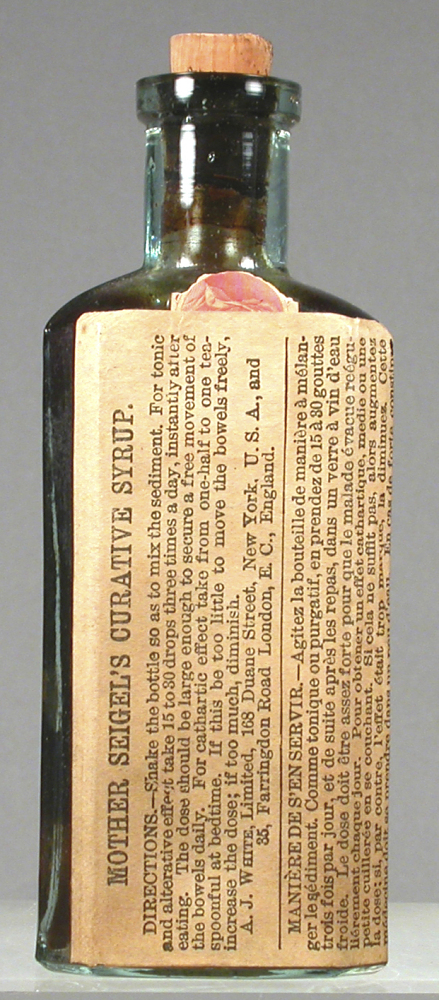
Alongside their success in tying agricultural pursuits to the demands of the market, the Shakers also used herbs within their communities. At Pleasant Hill, Shaker Sisters and children would often take to the woods, seeking out medicinal plants that could be foraged, considering wild plants to be gifts from God. What sort of native medicinal plants did the Pleasant Hill Shakers forage? Their journals reference many: boneset, lobelia, hoarhound, elder flowers, and wild ginger, among others.
By the late-1870s, declining fortunes at Pleasant Hill led the Shakers to seek a financial panacea in the form of an herbal cure-all remedy that they purchased from a Shaker apostate and her husband. Titling this new substance The Shaker Elixir of Malt, the medicine was never a successful sell. Ultimately, the Pleasant Hill Shakers had to seek out additional sources of revenue to try and recover from the financial losses of the failed venture.
At Shaker Village of Pleasant Hill today, herbs are still a prominent feature in our agricultural pursuits. After preservation work was recently completed on the 1824 Centre Family Dwelling, we replanted our herb garden and divided it into beds that mimic how the Shakers would have organized their own herb beds. What do you think we grow in each bed? Well, some things you are going to have to come to Shaker Village and find out for yourself!
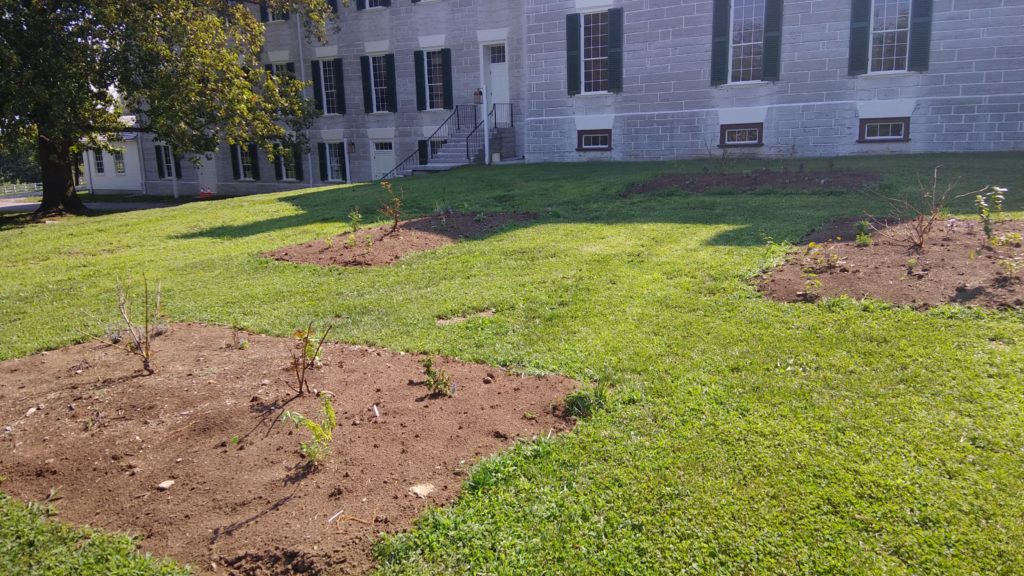
Join us this winter for the daily program Shaker Herbs: A Winter Tea Tasting to discover more about the Shaker herb industry and enjoy warm herbal tea made from a traditional Shaker blend! Check the daily schedule for program times.
